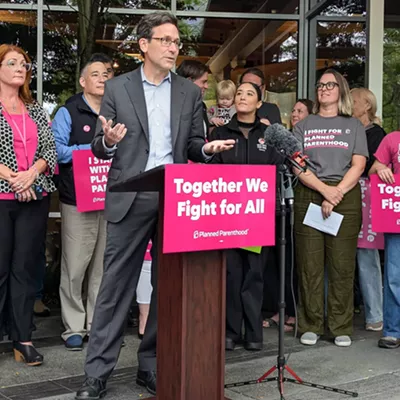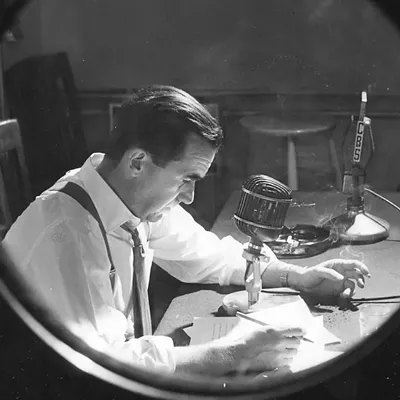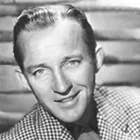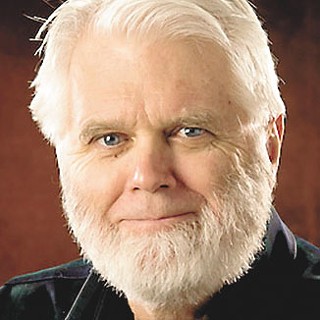More Open Space is not always the best choice
The problematic future of the YMCA building at Riverfront Park apparently depends on whether the city can entice a developer to lease and convert the building. If not, the city, in dire fi nancial straits, will accept the Conservation Futures money from the county, destroy the building at considerable cost and transform the area into grass, trees and… more grass and trees. Some make the argument that this would be all to the good; after all, why would we want to clutter the park with activities? We want more open spaces. That’s what parks are about.
No, they aren’t. All too often we equate the idea of “park” with open spaces. In her classic book, The Death and Life of Great American Cities, Jane Jacobs argues that parks aren’t the panacea that too many civic leaders presume. Indeed, the poorly designed park, she argues, not only doesn’t add to a downtown, it actually detracts. She writes, “In orthodox city planning, neighborhood open spaces are venerated in an amazingly uncritical fashion… Ask a houser how his planned neighborhood improves on the old city and he will cite, as self-evident virtue, More Open Space. [Jacobs uses these capital letters to emphasize her point.] Ask a zoner about the improvements in progressive codes and he will cite, again, as self-evident virtue… More Open Space. Walk with a planner through a dispirited neighborhood and though it be already scabby with deserted parked and tired landscaping… he will envision a future of More Open Space.”
She then asks: “More Open Space for what?
For muggings? For bleak vacuums between buildings? Or for ordinary people to use and enjoy?
But people,” she points out, “do not use city open space just because it is there and because city planners or designers wish they would.”
What distinguishes parks that people use from the parks that they don’t are diverse activities that attract people — the former have them, the latter have More Open Space. As Jacobs puts it, “there is no reason in bringing parks to where people are if, in the process, the reasons that people are there are wiped out and the park substituted for them.” But More Open Space does just this — wipes out the reasons that people are there by making the park an end in and of itself. Such a park serves only as what she terms a “border vacuum” and is a detriment to civic life. It repels people. It invites in crime and neglect.
People need reasons to go to the park. Ideally, all day every day. We call these reasons “demands.” Needed are “demand goods” as distinct from “impulse goods.” The more diverse the better. The ice skating rink at Riverfront Park is a demand good. The IMAX is a demand good. The carousel is a demand good. Some park activities are more pastoral and not at all commercial — the duck pond and rose garden at Manito Park. Sledding works, too. Diverse activities. Very important.
The original plan for the post-YMCA site was a high-rise condominium project — a really bad idea. Condos represent private ownership for private use, which is OK in most places but not in a park. What might work are rental units, eateries, even some offi ces, maybe something very bold like a year-round public market — all would deliver demand goods in the form of private ownership for public use, which is what makes parks successful. Moreover, renters and offi ce workers, market goers and diners would be more likely to use the other demand goods available throughout the park, creating a positive side effect.
Our YMCA building, as ’60s retro as it might be, is the right size and scale for the park. And it is part of our EXPO-era history. But can we convert from one set of demand goods (the Y activities) to another? For certain, More Open Space will add nothing to the demand goods menu and would exacerbate our already serious border vacuum problem at the park. Visitors complain that the park confronts one with too many poorly lighted, isolated Open Space areas, where there is little foot traffi c and no eyes on the trail.
Ron Wells, who has more experience at doing restoration and conversion projects than anyone else in town, has had his people pencil out the costs and benefi ts. It is his conclusion that in order for the necessary conversion to be paid for and revenue stream to be opened, a much, much longer lease would be required than what the city is now considering, which, as I understand it, is 10 years. But whether a developer can be found or not, the council should recognize that there is more at stake here than immediate budget considerations. Parks, Jacobs writes, should become part of the “street fabric; use them to intensify and knit together the fabric’s complexity and multiple use. They should not be used to island off different uses from each other or to island off different uses from each other.”
Unless the YMCA site is converted or replaced by another form of demand good, we will have islanded off the entire Post Street end of the park from the overall street fabric, and that would be bad news. For the park. For the bordering streets. For downtown.
More Open Space, in this case, would only add to our already long list of park problems. totheeditor@inlander.com
















